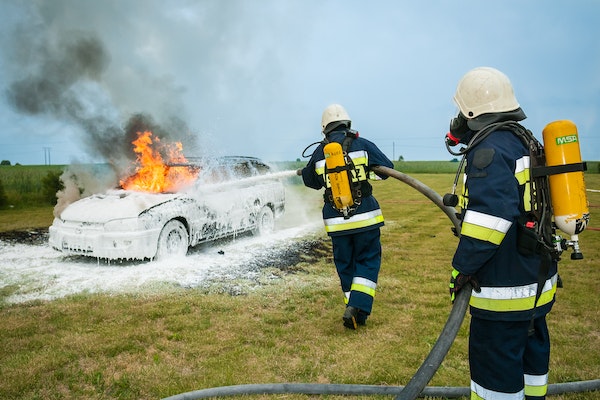Fire Retardant Clothing: Features To Consider
Knowing the facts is essential if you're selecting fire retardant (FR) clothing to shield workers from flames and extreme heat. We'll go over the fundamentals with you today. We'll cover a variety of topics, including what fire-resistant clothing is, its composition, durability, care, and cleaning.
What is fire retardant clothing?
Fire-resistant clothing, frequently referred to as FR clothing, is any article of clothing that has been specially created to shield its wearer from potential thermal exposure and intermittent flames. These clothes won't burn easily, and even if they do, they'll self-extinguish due to their design.
This clothing will prevent your clothes from catching fire if you come into contact with a short-term, intermittent flame. This ability greatly reduces the wearer's risk of suffering burn injuries and frequently gives the wearer valuable time to leave the dangerous area.
When combined, these characteristics give the wearer a much better chance of escaping and surviving if they are suddenly thrust into the midst of a flash fire, an electric arc, or another unexpected thermal problem that could result in harm. Fire-resistant clothing can mean the difference between escaping unharmed or suffering serious injuries in circumstances like these.
Know the extent of protection
A fire or an arc flash can be significantly diminished in effect and the wearer can be shielded from its worst effects by preventing heat transfer. Calories per square centimetre is the unit used to express the values used to calculate arc ratings. The degree of protection offered by a piece of clothing depends on its arc rating. While an arc rating of 40 or more will protect the wearer when performing tasks assessed as Hazard/Risk Category 4 (HRC4), the most severe risk, an arc rating of 4 is appropriate for a task assessed as a Hazard/Risk Category 1 (HRC1), the lowest risk.
It's important to keep in mind that not all fire-resistant clothing is arc rated, even though arc/APTV-rated clothing is all flame-resistant. Some FR clothing is simply made of fire-resistant materials without being put through a testing process to make sure it complies with regulations. The best way to guarantee adequate defence against potential dangers is to invest in products that have undergone extensive testing.
Read: Could Fire Retardant Garments Save Your Life?
Types of FR Clothes
A lot of professionals favour wearing fire-retardant outerwear over their everyday attire. Clothing such as coveralls, overalls, high-visibility jackets, and bomber jackets offer the wearer extensive defence against potential dangers. For professionals working in specialised fields, speciality items like balaclavas, face mufflers, and lab coats are also available. Others are made for situations where danger is more sporadic. For example, some FR clothing is made for environments where the wearer is constantly exposed to high temperatures. Before you spend money on your FR outfit, it's important to know which of these, referred to as primary and secondary protection, you need.
Style and Material
Flame resistance previously denoted something bulky and unattractive. Fortunately, FR clothing has improved significantly in terms of style over the past few years. There are now fashionable and protective FR shirts, hoodies, polo tops, jeans, and other clothing items available.
Most of these thinner clothes provide less protection. To add essential fire resistance to an outfit, layering them beneath a jacket or coverall with a high arc rating is a great idea. If the outer clothing is burned or damaged, this type of layering can help protect the wearer, preventing burns and lessening the severity of injuries.
Always wear fire-resistant clothing with a loose fit. Skin-tight clothing can more easily transfer heat to the skin, which can lead to more serious burns and injuries. The air layer that is created between the skin and loose-fitting clothing can help to insulate the wearer from heat and improve the protective properties of the garment.
Things to remember
- Professionals must refrain from donning synthetic clothing underneath their FR clothing since FR clothing is not fireproof. Underwear, t-shirts, and other clothing made of flammable synthetic materials can melt onto the skin and result in severe injuries. Even if the outer layer of clothing doesn't catch fire, melting is still a possibility. For this reason, professionals must dress appropriately from head to toe.
- Fire retardant clothing should be purchased from reputable, knowledgeable vendors like Unito. Professionals need to be aware that their jackets, mufflers, and overalls will safeguard them in the event of a thermal incident. The best way to guarantee PPE is up to par is to spend money on reputable brands of high-quality clothing.
- The arc rating of each garment will be listed on the label by reputable manufacturers like Unito, who will also include crucial details about the fabrics used to make each piece of clothing. Professionals can protect themselves while working properly if they are aware of each piece's protective features.
Follow us on:
Facebook | Instagram | LinkedIn | Twitter | Google My Business




